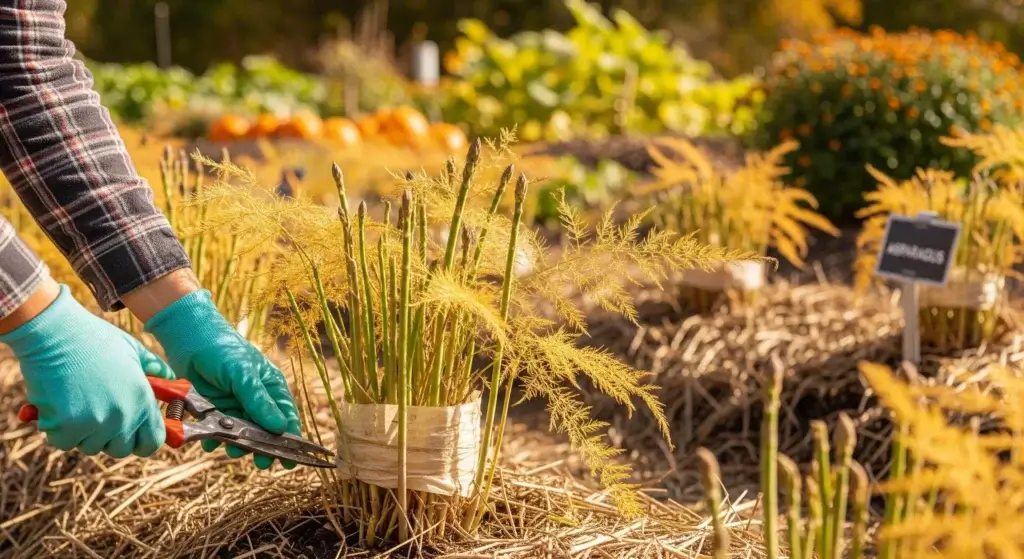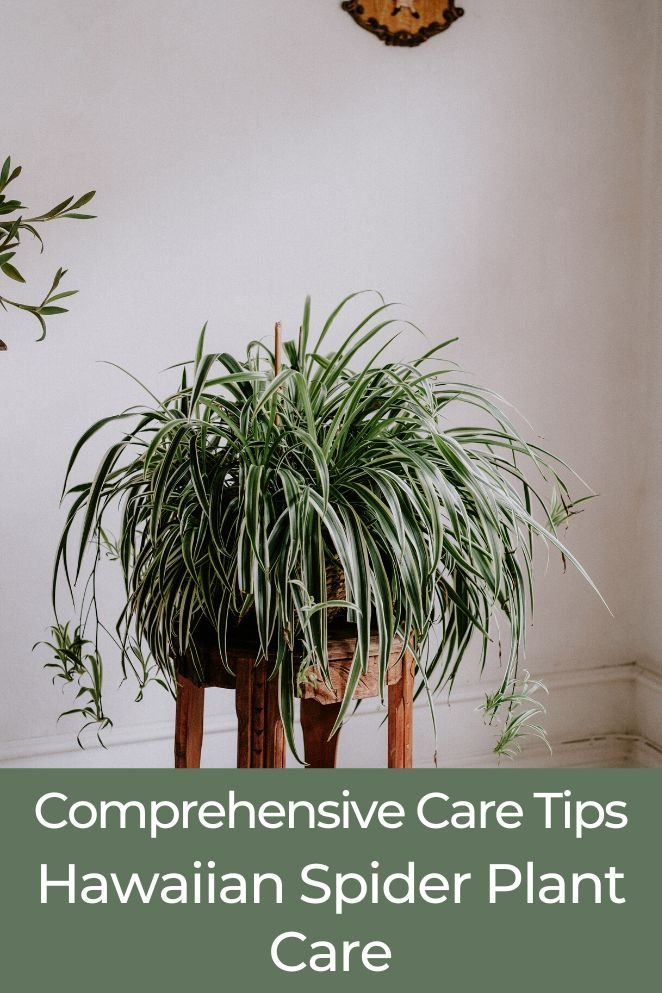
Hawaiian Spider Plants are beloved for their lively foliage and exceptional ability to cleanse the air, making them a popular choice among plant enthusiasts.
In this detailed guide, we’ll uncover the best ways to care for your Hawaiian Spider Plant, ensuring it flourishes and brings its captivating beauty into your home effortlessly.
These plants boast a distinctive allure and require minimal upkeep, making them an appealing addition to any household.
Let’s explore the secrets to nurturing your Hawaiian Spider Plant for optimal growth and vibrancy.
Exploring the Hawaiian Spider Plant Variety
The Hawaiian Spider Plant, Chlorophytum comosum ‘Hawaiian,’ stands out with its unique characteristics, making it distinct from other varieties of the Spider Plant family.
Delving into its features unveils a captivating plant that’s both visually striking and easy to care for.
- Read also: Snake Plant Care Indoor for Thriving Bliss
- Read also: Snake Plant Leaves Turning Yellow
Leaf shape
The leaves of the Hawaiian Spider Plant exhibit a distinct shape, broader than those of other Spider Plant varieties.
Their elongated form gently arches and tapers to a point, creating an elegant silhouette.
This leaf structure adds grace and dimension to the plant’s overall appearance.
Color variations
The foliage of the Hawaiian Spider Plant presents a stunning array of colors, featuring a harmonious blend of vibrant green hues interspersed with delicate creamy-white stripes.
These stripes adorn the leaves in varying patterns, creating a captivating visual contrast.
The interplay between the shades of green and the soft, creamy tones gives the plant an exquisite and eye-catching appeal.
Growth patterns
Notably, the growth habit of the Hawaiian Spider Plant is robust and prolific.
It tends to produce an abundance of offsets, or “spiderettes”, along its long stems.
These miniature replicas of the mother plant sprout readily, dangling gracefully and lending a trailing charm.
This growth pattern allows for effortless propagation, making it an excellent choice for expanding your plant collection.
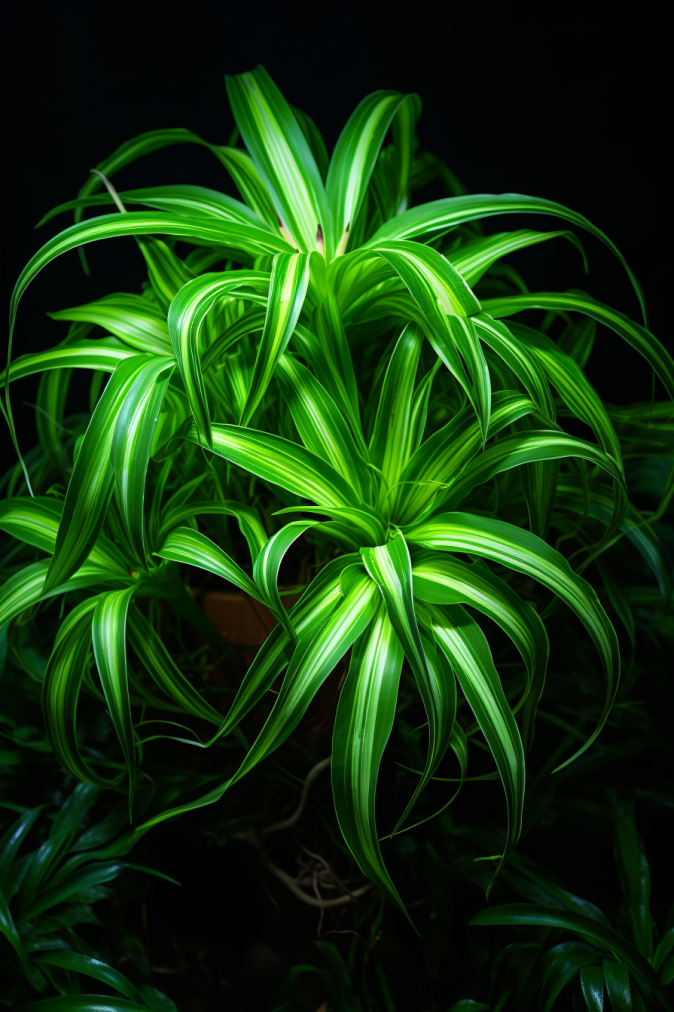
Advantages of Hawaiian Spider Plants
Here’s a detailed breakdown of the advantages of Hawaiian Spider Plants:
Air purification
Hawaiian Spider Plants are like little superheroes when it comes to cleaning the air.
They’re excellent at reducing toxins commonly found in indoor spaces, such as formaldehyde and carbon monoxide.
This purification ability creates a fresher, healthier environment for you to breathe in.
Efficient filtration
These plants have a knack for efficiently filtering out harmful substances. Formaldehyde, often present in materials like carpets, upholstery, and cleaning products, gets absorbed by the plant, making the air safer for everyone indoors.
Easy maintenance
They’re quite low-maintenance, which is a big plus for busy folks.
These plants don’t demand constant attention or watering schedules, making them ideal for those without a green thumb.
Pet-friendly
One of the best parts about Hawaiian Spider Plants is that they’re non-toxic to pets.
For pet owners concerned about their furry friends nibbling on plants, this species provides peace of mind while adding greenery to your home.
Adaptability
They adapt well to different light conditions, thriving in both bright and indirect sunlight.
This versatility means you can place them in various spots around your home without worrying too much about lighting requirements.
Aesthetic appeal
Beyond their practical benefits, Hawaiian Spider Plants are visually appealing.
Their long, slender leaves arch gracefully, adding a touch of elegance to any space.
They’re versatile enough to complement various interior decor styles.
Improved mood
Studies suggest that having indoor plants like Hawaiian Spider Plants can positively impact mood and reduce stress levels.
The sight of greenery can create a calming effect, enhancing overall well-being.
Oxygen production
Like all plants, Hawaiian Spider Plants release oxygen during photosynthesis, contributing to better air quality in your home.
This can lead to improved sleep and increased overall energy levels.
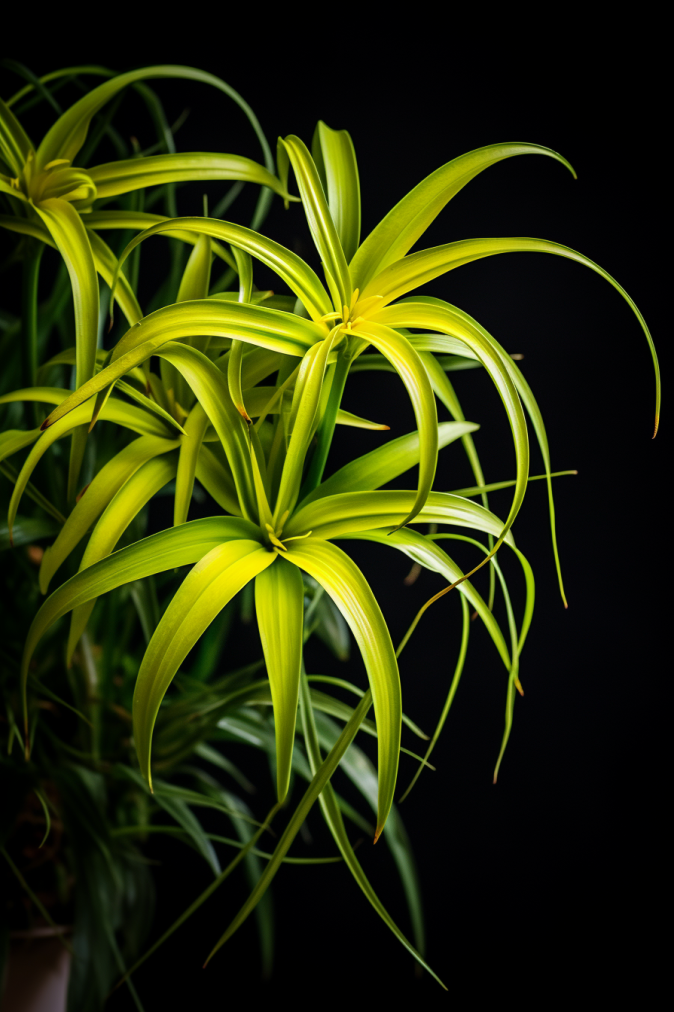
A Complete Care Guide for Hawaiian Spider Plants
Lighting needs
These plants love moderate to bright, indirect sunlight.
Placing them near a window with a sheer curtain is perfect. Avoid direct sunlight as it can scorch the leaves, causing damage.
Watering routine
During their active growing seasons, which are typically spring and summer, aim to keep the soil evenly moist.
But be cautious—don’t overwater. In winter, their growth slows down, so reduce watering frequency.
Allow the top inch or so of the soil to dry out between waterings, but never let the soil completely dry.
Soil and potting
Opt for a well-draining potting mix to ensure excess water can easily drain away.
The pot you choose should have drainage holes to prevent water accumulation, which can cause root rot.
Repot your plant every couple of years to refresh the soil and give the roots more space.
Fertilizing strategy
During the active growing months, feed your Hawaiian Spider Plant with a balanced fertilizer once a month.
Dilute the fertilizer to half its recommended strength to avoid overwhelming the plant with nutrients.
This provides the necessary boost for healthy growth without overdoing it.
Temperature and environment
They’re pretty flexible with temperatures but prefer warmer conditions.
Keep your plant in an environment where the temperature stays between 65°F to 80°F (18°C to 27°C).
Avoid sudden temperature fluctuations and drafts, as they can stress the plant.
Pest control
Stay vigilant for common pests such as spider mites or aphids.
Should you spot any infestations, a gentle wipe of the leaves with a damp cloth or the use of organic insecticidal soap can effectively deter these unwelcome visitors.
Humidity levels
Hawaiian Spider Plants can handle average indoor humidity, but they appreciate a slightly more humid environment.
You can increase humidity by misting the leaves occasionally or placing a shallow tray of water with pebbles near the plant (ensure the pot is not sitting directly in water).
Propagation
Hawaiian Spider Plants are skilled at multiplying, creating miniature versions known as “spiderettes”.
These babies serve as perfect starters for growing new plants, giving you the chance to increase your plant collection or gift these lovely greens to loved ones.
The primary methods for propagating these spider plants are through division and offsets.
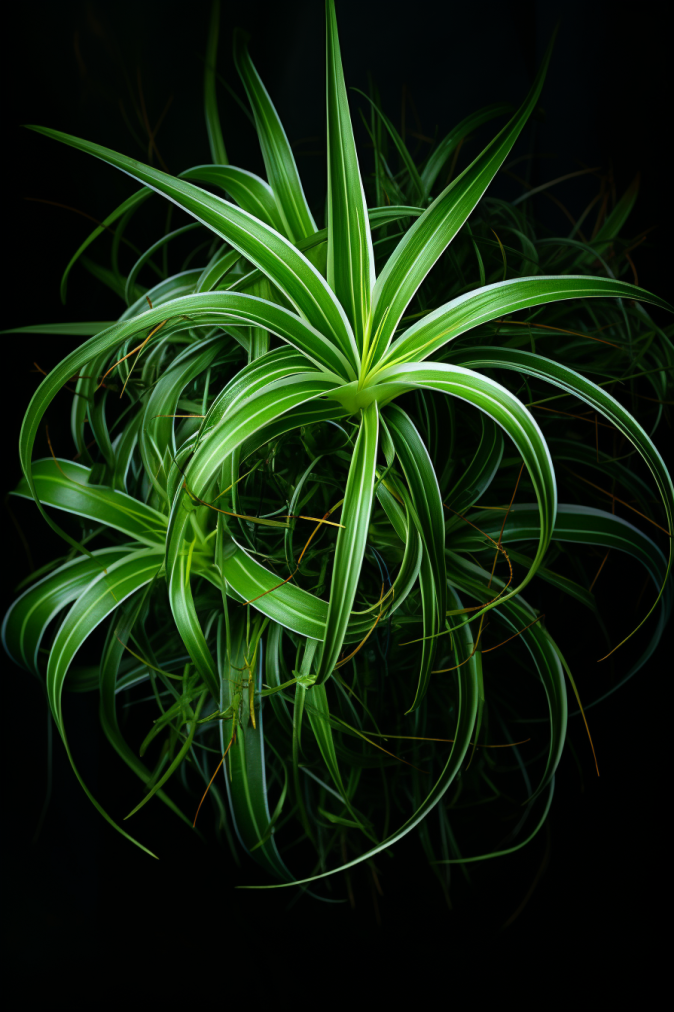
Tips and Tricks for Hawaiian Spider Plants
- Propagation: Expand your plant collection by propagating the “spiderettes”. Simply place them in water until roots develop, then transfer them to the soil.
- Pruning: Trim yellow or brown leaves regularly to encourage new growth and maintain the plant’s health.
- Brown leaf tips: This can be a sign of underwatering or overfertilization. Adjust your watering and fertilizer routine accordingly.
- Yellowing leaves: This can indicate overwatering or lack of light. Check the soil moisture and adjust the light exposure.
- Pests and diseases: While relatively pest-resistant, keep an eye out for mealybugs and spider mites. Treat them with insecticidal soap or neem oil.
- Fertilizer: Less is more, a little fertilizer goes a long way. Overdoing it can burn the roots and harm your plant.
Conclusion
Taking care of your Hawaiian Spider Plant is a satisfying task that doesn’t require too much effort.
By giving it the right amount of light, water, and a little care, you’ll witness it flourishing and bringing a delightful natural touch to your home.
- Read also: Why Your Snake Plant Leaves Are Curling
- Read also: Understanding Why Is My Snake Plant Drooping
FAQs
Yes, Hawaiian Spider Plants are non-toxic to cats and dogs, making them safe and pet-friendly.
Repotting can be done every 2-3 years or when the plant outgrows its current container.
These plants prefer indoor environments with indirect sunlight. However, they can be placed outdoors in shaded areas, especially in warmer climates.


